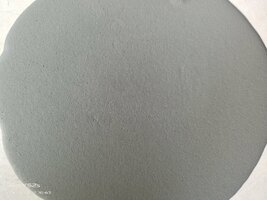Scott Kaplan
Member
I have been using Microsilica for self-leveling these days. After measuring its fluidity, the surface is densely packed with pinholes, which look very dense. What is the problem? Here is the formula,
ordinary portland cement: 275
calcium sulphoaluminate: 125
bassanite: 30
Anhydrite(12.5 80-100 mesh): 450
limestone powder: 150
Microsilica: 38
Polycarboxylate superplasticizer: 1.5
antifoaming agent: 0.6 400
CPS: 0.7
Tartaric acid: 1.2
Sodium gluconate: 0.5
Coagulant: 0.7
Redispersible Polymer powder: 12
Initial fluidity: 150mm
ordinary portland cement: 275
calcium sulphoaluminate: 125
bassanite: 30
Anhydrite(12.5 80-100 mesh): 450
limestone powder: 150
Microsilica: 38
Polycarboxylate superplasticizer: 1.5
antifoaming agent: 0.6 400
CPS: 0.7
Tartaric acid: 1.2
Sodium gluconate: 0.5
Coagulant: 0.7
Redispersible Polymer powder: 12
Initial fluidity: 150mm


